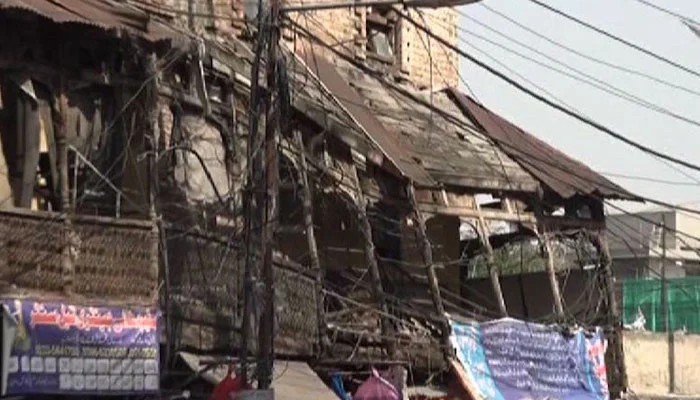A devastating incident shook Karachi recently when a five-story residential building in the Lyari Baghdad area collapsed, resulting in the loss of 27 precious lives and leaving many more injured. This tragic event has not only brought grief to the families affected but has also highlighted the urgent need for strict enforcement of building safety regulations across the country.
Background of the Incident
The collapsed building had already been declared unsafe by the Sindh Building Control Authority (SBCA). Over the past two years, multiple eviction notices had been issued to the residents, urging them to vacate the premises due to the structural risks. Unfortunately, these warnings were largely ignored or inadequately enforced, culminating in this fatal disaster. The collapse has underscored the devastating consequences of neglecting building safety protocols and regulatory compliance.
Immediate Aftermath and Rescue Efforts
Following the collapse, emergency responders and rescue teams rushed to the site to search for survivors amidst the rubble. The operation was challenging due to the unstable debris and the building’s size. Nonetheless, the teams worked tirelessly to retrieve trapped individuals and provide medical assistance to the injured.
The loss of 27 lives has deeply affected the local community and sparked outrage over the failure of authorities to prevent such tragedies. Many victims were women, children, and elderly residents who had no safe place to escape the sudden collapse.
Government Response and Actions in Sindh
In response to the tragedy, the Sindh provincial government has taken swift action to prevent similar incidents in the future. Authorities have identified 51 buildings across Karachi that are deemed highly dangerous and are at risk of collapse. Immediate orders have been given to evacuate these structures and, where necessary, demolish them to eliminate hazards.
Six of these buildings have already been vacated within two days of the announcement, demonstrating a commitment to urgent action. However, challenges remain in terms of machinery availability and manpower required to carry out large-scale demolitions efficiently.
The SBCA’s demolition teams are being mobilized and equipped with the necessary resources to tackle the backlog of unsafe buildings. The provincial government has also emphasized the importance of awareness campaigns to educate residents about the risks of living in condemned structures.
Expanding the Crackdown to Other Provinces
The tragedy in Karachi has served as a wake-up call for authorities across Pakistan. Recognizing the potential for similar disasters, provincial governments in Sindh, Punjab, Balochistan, and Khyber Pakhtunkhwa have intensified inspections of old and unsafe buildings in their jurisdictions.
In Sindh alone, apart from Karachi, several other cities have reported a significant number of hazardous buildings. Hyderabad has identified 80 dangerous buildings, Mirpurkhas 81, Sukkur 67, and Larkana 4 structures that pose serious safety risks.
The Public Accounts Committee of the Sindh Assembly had already issued directives back in December 2024, urging the government to take immediate steps to clear unsafe buildings in Karachi and other major cities. This tragic incident has now accelerated those efforts, compelling authorities to act swiftly.
Broader Issues Underlying the Crisis
Several factors contribute to the widespread problem of unsafe buildings in Pakistan:
-
Aging Infrastructure: Many buildings were constructed decades ago without adherence to modern safety standards or engineering guidelines.
-
Lack of Enforcement: Despite clear regulations, weak enforcement mechanisms have allowed landlords and residents to ignore evacuation notices or conduct illegal modifications that compromise structural integrity.
-
Rapid Urbanization: Cities like Karachi have experienced rapid population growth and urban sprawl, putting pressure on housing and often leading to haphazard construction practices.
-
Corruption and Negligence: Corrupt practices and bureaucratic inefficiencies sometimes delay or prevent effective action against dangerous buildings.
Importance of Building Safety Regulations
This disaster highlights the critical importance of enforcing building codes and safety regulations rigorously. Proper inspection and certification should be mandatory for all residential and commercial structures, especially those that are aging or show signs of deterioration.
Authorities must prioritize regular monitoring and maintenance of buildings to identify risks early. Equally important is educating the public about the dangers of living in condemned properties and encouraging cooperation during evacuation efforts.
Moving Forward: Recommendations
-
Enhanced Surveillance and Monitoring: Deploy technology such as drones and 3D scanning to assess the structural health of buildings more efficiently.
-
Strengthened Legal Framework: Introduce tougher penalties for non-compliance with building safety rules, including fines and criminal liability for responsible parties.
-
Community Engagement: Work with local communities to ensure timely reporting of unsafe conditions and support for evacuation plans.
-
Investment in Emergency Preparedness: Equip rescue teams with advanced tools and training to handle building collapse incidents promptly and effectively.
Conclusion
The tragic collapse of a residential building in Karachi is a stark reminder of the devastating human cost of neglecting building safety. The loss of 27 lives must serve as a catalyst for meaningful reforms and decisive actions to safeguard lives across Pakistan. The current crackdown on dangerous buildings in Karachi and other cities is a positive step forward, but sustained efforts, adequate resources, and community cooperation are essential to prevent future disasters.
By addressing the root causes of this crisis and strengthening regulatory enforcement, Pakistan can hope to protect its citizens and build safer urban environments for generations to come.
Reference: کراچی میں عمارت گرنے سے اموات کے بعد دیگر صوبوں کی مخدوش عمارتوں کےخلاف کارروائی








